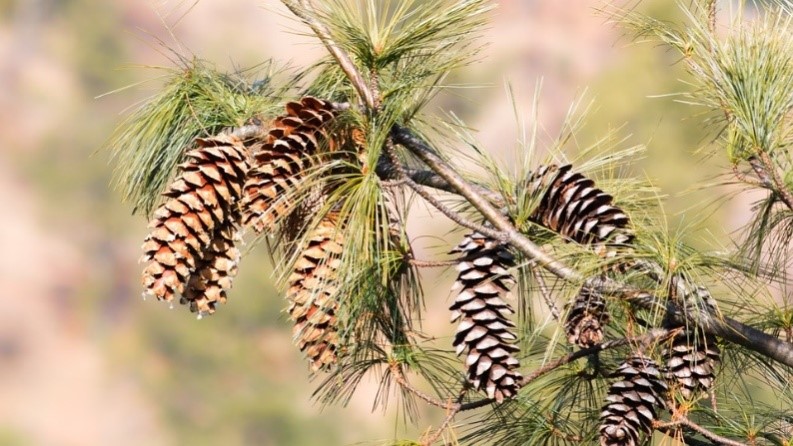How do Plants Grow & Reproduce?
Grade 6 Science Worksheets
Plant a Tree for your Tomorrow …
You must have heard that John Denver song on Arbor Day. It’s about the conservation of trees and plants. Plants are essential for our survival because they produce oxygen which we breathe and they are a source of food which we eat. They have many more uses too – as raw material for clothing and shelter, for medicinal purposes, and to bring beauty and pleasure into our lives. Plants are found almost everywhere on earth. How do plants multiply and grow?
Schedule a Free session to clear worksheet doubts
No credit card required, no obligation to purchase.
Just schedule a FREE Sessions to meet a tutor and get help on any topic you want!
Angiosperms and Gymnosperms
Most plants grow from seeds. Depending on how seeds are formed, plants may be of two kinds:
- Angiosperms are flowering plants. They produce seeds within its fruit. The flower contains reproductive organs – stamens (male) and pistils (female).
- Gymnospermshave no flowers or fruits. Instead, they bear cones – pollen (male cones) and seed (female cones).


The process of Reproduction of such plants begins with the production ofPollen Grainsin their male reproductive organs, which Fertilizeafter reaching the Ovaries in the female reproductive organs. The Fertilization process produces new seeds.
Natural elements such as the wind or the bees transport the pollen in a process called Pollination. When pollen is carried from one flower to another, it is called Cross-Pollination. Pollination may also occur within the same flower, which is called Self-Pollination.
Personalized Online Tutoring from eTutorWorld
eTutorWorld offers affordable one-on-one live tutoring over the web for Grades K-12, Test Prep help for Standardized tests like SCAT, CogAT, MAP, SSAT, SAT, ACT, ISEE and AP. You may schedule online tutoring lessons at your personal scheduled times, all with a Money-Back Guarantee. The first one-on-one online tutoring lesson is always FREE, no purchase obligation, no credit card required.
For answers/solutions to any question or to learn concepts, take a FREE TRIAL Session.
No credit card required, no obligation to purchase.
Just schedule a FREE Sessions to meet a tutor and get help on any topic you want!

The new seeds produced after fertilization are also dispersed by natural elements such as wind, water, or animals, to new soil areas where the process of Germination starts – the seed germinates in soil and grows roots, stems, and leaves to become a new plant. When the plant has grown to maturity it again grows either flowers or cones and the process of reproduction begins again.

Check Point
- Flowering plants are known as ______.
- Cone-bearing plants are known as ______.
- The reproductive organs of a flower are the ______ and ______.
- When pollen is carried from one flower to another, it is called ______.
- The process by which a seed in soil grows roots, stems, and leaves to become a new plant is known as ______.
Answer Key
- Angiosperms
- Gymnosperms
- Stamen, Pistil
- Pollinationor Cross-Pollination
- Germination
Schedule a Free session to clear worksheet doubts
No credit card required, no obligation to purchase.
Just schedule a FREE Sessions to meet a tutor and get help on any topic you want!
Learn more about Scientific Method and other important topics with 7th Grade Science Tutoring at eTutorWorld. Our expert science tutors break down the topics through interactive one-to-one sessions. We also offer the advantage of customized lesson plans, flexible schedules and convenience of learning from home.
Pricing for Online Tutoring
| Tutoring Package | Validity | Grade (1-12), College |
|---|---|---|
| 5 sessions | 1 Month | $124 |
| 1 session | 1 Month | $25 |
| 10 sessions | 3 months | $239 |
| 15 sessions | 3 months | $354 |
| 20 sessions | 4 months | $449 |
| 50 sessions | 6 months | $1049 |
| 100 sessions | 12 months | $2049 |
6th Grade Free Worksheets
- Inquiry process
- Nature of Science
- Scientific Inquiry
- Inquiry, Analysis and Problem Solving
- Ethical Practices
- Science and Society
- Biotic and Abiotic Factors
- Impact of Organisms
- Adaptation
- Spheres of Earth
- Natural Resources
- Environmental Issues
- Conservation of Earth
- Understanding Technology
- Abilities To Do Technological Design
- Structure of Earth
- Solar System
- Rocks and Fossils
- Earth Systems
- Plate Tectonics
- Evolution
- Magnetic Field of Earth
- Geologic Time
- Materials and Processes That Shape a Planet
- Astronomy
- Ecology
- Energy
- Kinetic and Potential Energy
- Energy Transfer
- Matter and its Structure
- States of Matter
- Physical and Chemical Changes
- Force and Motion
- Electricity and Magnetism
- Wave Interactions
- Sound
- Light
- Introduction to Life Science
- The Origin & History of Life On Earth
- Plant and Animal Cells
- Parts of a Cell
- The Cell Cycle
- How Living Organisms Get Energy
- Classification of Organisms
- How Plants Grow & Reproduce
- The Human Respiratory System
- The Human Cardiovascular System
- The Human Digestive System
- The Human Endocrine Systems
- The Human Nervous System
- The Human Muscular System
- The Human Skeletal System
Images Credit:
https://image.freepik.com/free-vector/diagram-showing-common-flower-parts-white-background_1308-43034.jpg
https://cdn.pixabay.com/photo/2017/10/04/19/48/pine-2817347_1280.jpg


